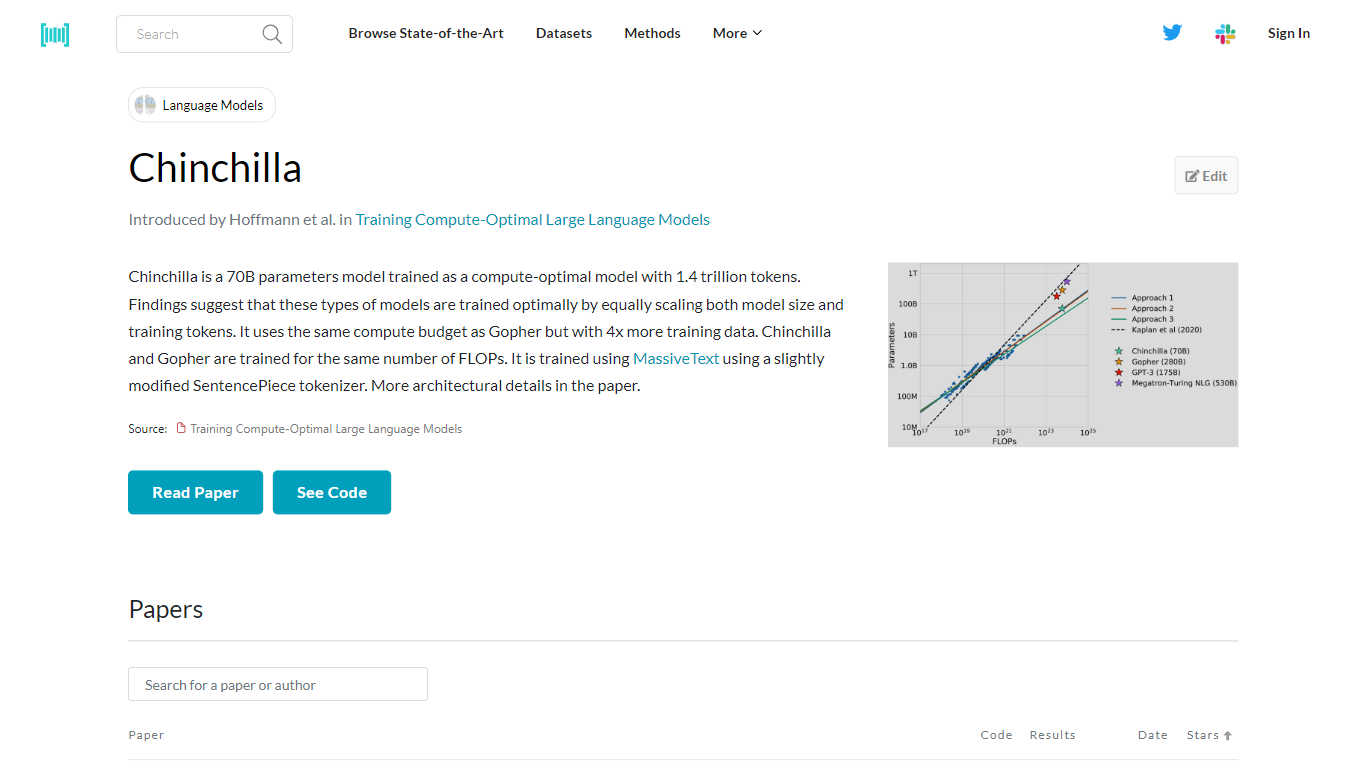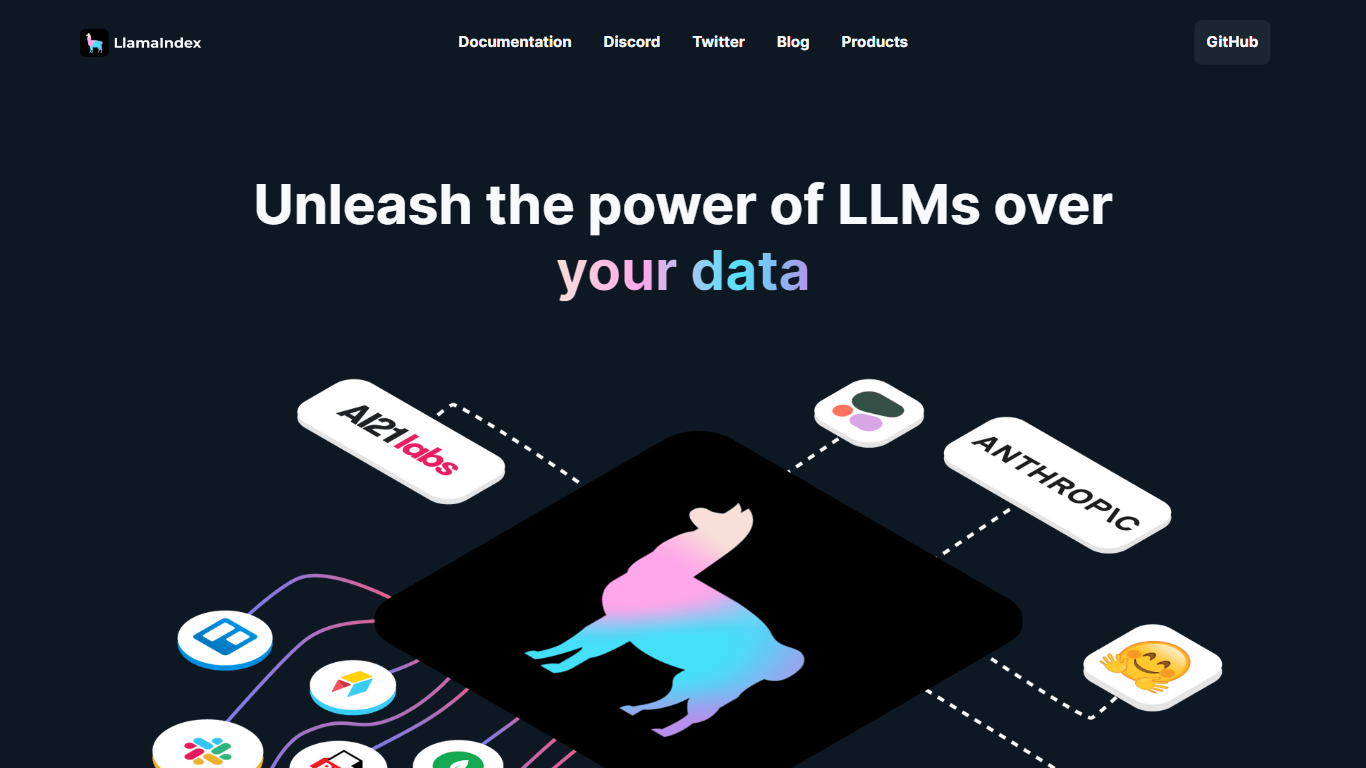Chinchilla vs LlamaIndex
Explore the showdown between Chinchilla vs LlamaIndex and find out which AI Large Language Model (LLM) tool wins. We analyze upvotes, features, reviews, pricing, alternatives, and more.
When comparing Chinchilla and LlamaIndex, which one rises above the other?
When we contrast Chinchilla with LlamaIndex, both of which are exceptional AI-operated large language model (llm) tools, and place them side by side, we can spot several crucial similarities and divergences. Neither tool takes the lead, as they both have the same upvote count. Every vote counts! Cast yours and contribute to the decision of the winner.
Think we got it wrong? Cast your vote and show us who's boss!
Chinchilla

What is Chinchilla?
Chinchilla is an advanced artificial intelligence model with 70 billion parameters, developed to optimize both model size and the volume of training data for efficient learning. It was trained using an extraordinary 1.4 trillion tokens, with an emphasis on scaling the model and data proportionately. This method of training is based on research that suggests optimal training occurs when model size and training tokens are increased in tandem. Chinchilla shares its compute budget with another model named Gopher, but it distinguishes itself by leveraging four times more training data. Despite this difference, both models are designed to operate under the same number of FLOPs, ensuring efficient compute resource utilization. Chinchilla leverages MassiveText, a vast dataset, and employs an adaptation of the SentencePiece tokenizer to interpret and process data. For a detailed understanding of its architecture and training, one can refer to the paper that elaborates on these aspects.
LlamaIndex

What is LlamaIndex?
LlamaIndex presents a seamless and powerful data framework designed for the integration and utilization of custom data sources within large language models (LLMs). This innovative framework makes it incredibly convenient to connect various forms of data, including APIs, PDFs, documents, and SQL databases, ensuring they are readily accessible for LLM applications. Whether you're a developer looking to get started easily on GitHub or an enterprise searching for a managed service, LlamaIndex's flexibility caters to your needs. Highlighting essential features like data ingestion, indexing, and a versatile query interface, LlamaIndex empowers you to create robust end-user applications, from document Q&A systems to chatbots, knowledge agents, and analytics tools. If your goal is to bring the dynamic capabilities of LLMs to your data, LlamaIndex is the tool that bridges the gap with efficiency and ease.
Chinchilla Upvotes
LlamaIndex Upvotes
Chinchilla Top Features
Compute-Optimal Training: A 70B parameter model trained with a focus on ideal scaling of model size and training data.
Extensive Training Data: Utilizes 1.4 trillion tokens, indicating a rich and diverse dataset for in-depth learning.
Balanced Compute Resources: Matches the compute budget of Gopher while offering 4x the amount of training data.
Efficient Resource Allocation: Maintains training under the same number of FLOPs as its counterpart, Gopher.
Utilization of MassiveText: Trains using a slightly modified SentencePiece tokenizer on the MassiveText dataset, providing a vast corpus for model learning.
LlamaIndex Top Features
Data Ingestion: Enable integration with various data formats for use with LLM applications.
Data Indexing: Store and index data for assorted use cases including integration with vector stores and database providers.
Query Interface: Offer a query interface for input prompts over data delivering knowledge-augmented responses.
End-User Application Development: Tools to build powerful applications such as chatbots knowledge agents and structured analytics.
Flexible Data Integration: Support for unstructured structured and semi-structured data sources.
Chinchilla Category
- Large Language Model (LLM)
LlamaIndex Category
- Large Language Model (LLM)
Chinchilla Pricing Type
- Freemium
LlamaIndex Pricing Type
- Freemium
